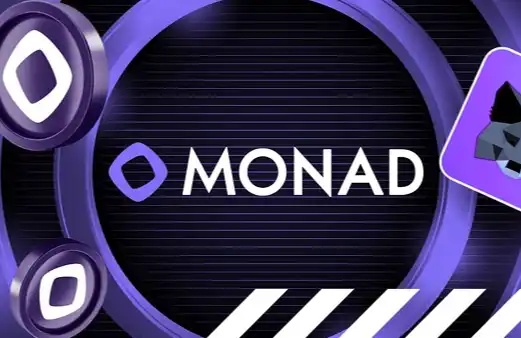a16z Report: Analyzing the Liquidity, Sovereignty, and Credit Challenges Behind the Rise of Stablecoins
Original Title: How stablecoins become money: Liquidity, sovereignty, and credit
Original Author: Sam Broner, a16z Crypto Partner
Translation: Deep Tide TechFlow
Traditional finance is gradually incorporating stablecoins into its system, and the trading volume of stablecoins is continuously growing. Due to their fast, low-cost, and programmable nature, stablecoins have become the best tool for building global financial technology. The transition from traditional technology to new technology means that we will adopt fundamentally different business models — but this transformation will also bring new risks. After all, the self-custody model based on digital assets is a disruptive change to the banking system that has relied on deposit-taking for hundreds of years.
So, in this transition process, what broader monetary structure and policy issues do entrepreneurs, regulators, and traditional financial institutions need to address?
This article delves into three major challenges and potential solutions, where both startups and builders in the traditional financial sector can find current areas of focus: the singleness of money; the application of the US dollar stablecoin in non-dollar economies; and the impact that a better currency supported by government debt may bring.
1. The "Singleness of Money" and Building a Unified Monetary System
The "Singleness of Money" refers to the ability for various forms of money within an economy to be exchanged at a fixed ratio (1:1) regardless of who issued the money or where it is stored, and to be used for payment, pricing, and contract performance. The singleness of money indicates that even with multiple institutions or technologies issuing similar currency-like instruments, there is still a unified monetary system within the economy. In practice, whether it's the US dollars in your JPMorgan account, the US dollars in a Wells Fargo account, or your Venmo balance, they should always be equivalent to stablecoin and maintain a 1:1 ratio. This principle holds true even though these institutions have differences in asset management practices, and their regulatory status has significant but often overlooked distinctions.
The history of the US banking industry is to some extent a history of ensuring the interchangeability of the US dollar and continuously improving the relevant systems.
Global banks, central banks, economists, and regulatory bodies advocate for the "Singleness of Money" because it greatly simplifies transactions, contracts, governance, planning, pricing, accounting, security, and daily transactions. Today, businesses and individuals take the singleness of money for granted.
However, "monetary uniformity" is not the current operating model of stablecoins, as stablecoins have not yet been fully integrated into existing infrastructure. For example, if Microsoft, a bank, a construction company, or a homebuyer tries to swap $5 million worth of stablecoin on an Automated Market Maker (AMM), the user will not be able to achieve a 1:1 exchange ratio due to insufficient liquidity depth causing slippage, ultimately receiving an amount lower than $5 million. If stablecoins are to truly revolutionize the financial system, this scenario is clearly unacceptable.
A universal face-value exchange system would help stablecoins become part of a unified monetary system. If stablecoins cannot function as part of a unified monetary system, their potential functionality and value will be greatly diminished.
Currently, the operation of stablecoins is such that the issuing entities (such as Circle and Tether) provide direct redemption services for their stablecoins (USDC and USDT, respectively) to institutional clients or users through a verification process, usually with a minimum transaction amount.
For example, Circle provides Circle Mint (formerly Circle Account) for corporate users to mint and redeem USDC; Tether allows verified users to redeem directly, often requiring a certain threshold (e.g., $100,000).
The decentralized MakerDAO, through its Peg Stability Module (PSM) module, allows users to exchange DAI for other stablecoins (such as USDC) at a fixed rate, essentially acting as a verifiable redemption/exchange mechanism.
While these solutions are effective, they are not universally available and require integrators to connect with each issuing entity individually. Without direct integration, users can only exchange between stablecoins or "get off" through market execution, rather than settling at face value.
In the absence of direct integration, some businesses or applications may claim to maintain an extremely narrow exchange range — such as always exchanging 1 USDC for 1 DAI with a 1 basis point difference — but this commitment still depends on liquidity, balance sheet space, and operational capabilities.
In theory, Central Bank Digital Currencies (CBDCs) could create a unified monetary system, but they come with many issues — privacy concerns, financial surveillance, restricted money supply, slowed innovation speed, etc. — therefore, a model that mimics the existing financial system is almost certain to prevail.
For builders and institutional adopters, the challenge lies in how to build a system that allows stablecoins to be a "pure currency" like bank deposits, fintech balances, and cash, despite differences in collateral, regulation, and user experience. The goal of incorporating stablecoins into monetary uniformity presents entrepreneurs with the following construction opportunities:
1. Widely Available Minting and Redemption Mechanism
A stablecoin issuer needs to collaborate closely with banks, fintech companies, and other existing infrastructure to create seamless and at-par fiat on/off ramps. By enabling stablecoins to be interchangeably pegged to fiat through existing systems, stablecoins can operate just like traditional currencies, accelerating their adoption on a global scale.
2. Stablecoin Clearinghouse
Establishing a decentralized consortium — akin to a stablecoin version of ACH or Visa — to ensure instant, frictionless, and transparent fee-free conversion experiences. MakerDAO's Peg Stability Module (PSM) has provided a promising model, but extending the protocol to facilitate at-par settlement among issuing parties and with fiat USD would be a more revolutionary solution.
3. Development of a Trusted Neutral Collateral Layer
Transitioning the interchangeability of stablecoins to a widely accepted collateral layer (such as tokenized bank deposits or wrapped government bonds) would allow stablecoin issuers to innovate on branding, marketing, and incentive mechanisms while enabling users to easily unwrap and convert as needed.
4. Enhanced Exchanges, Transaction Intent, Cross-Chain Bridges, and Account Abstraction
Utilizing superior versions of existing or known technologies to automatically discover and execute optimal fiat on/off ramps or exchange methods for the best rates. Building multi-currency exchanges to minimize slippage. At the same time, abstracting away this complexity to provide stablecoin users with a predictable fee experience even at scale.
2. Global Demand for USD Stablecoins: A Lifeline in High Inflation and Capital Control
In many countries, there is a strong structural demand for the USD. For citizens living in high inflation or strict capital controls, a USD stablecoin serves as a lifeline — protecting savings and providing a direct link to the global commercial network.
For businesses, the USD serves as the international pricing unit, making international transactions more convenient and transparent. People need a fast, widely accepted, and stable currency for consumption and savings.
However, current cross-border remittance fees can be as high as 13%, with 900 million people worldwide living in high inflation economies lacking access to a stable currency, and 1.4 billion people underserved by banking. The success of USD stablecoins not only reflects the demand for the USD but also underscores people's desire for a "better money."
Aside from political and nationalist reasons, one significant reason why countries maintain their local currency is that it empowers decision-makers to adjust the economy based on local economic realities. When disasters affect production, key exports decline, or consumer confidence wavers, the central bank can mitigate the impact, enhance competitiveness, or stimulate consumption by adjusting interest rates or issuing currency.
The widespread adoption of a US Dollar stablecoin may undermine the ability of local policymakers to regulate the economy. The root of this issue lies in the economic "Impossible Trinity" principle, which states that a country can only choose two of the following three economic policies at any given time:
1. Free capital mobility;
2. Fixed or tightly managed exchange rates;
3. Independent monetary policy (freely setting domestic interest rates).
Decentralized peer-to-peer transfers have impacted all policies in the "Impossible Trinity." Such transfers bypass capital controls, forcing full capital mobility. Dollarization weakens the policy influence of managed exchange rates or domestic interest rates by anchoring citizens to an international pricing unit. Countries steer citizens towards the local currency through narrow channels of the banking system to implement these policies.
Nevertheless, US Dollar stablecoins remain attractive to foreign countries because a cheaper, programmable Dollar can attract trade, investment, and remittances. Most international transactions are denominated in dollars, so the easier the access to dollars, the faster, simpler, and more common international trade becomes. Furthermore, governments can still tax the inflow and outflow channels of funds (on/off ramps) and supervise local custodial institutions.
At the correspondent banking and international payment levels, there already exist a series of regulations, systems, and tools to prevent money laundering, tax evasion, and fraud. Although stablecoins operate on a transparent and programmable ledger, making the construction of security tools simpler, these tools still need practical development. This provides entrepreneurs with an opportunity to connect stablecoins to existing international payment compliance infrastructure to support and enforce relevant policies.
Unless we assume that sovereign states would sacrifice valuable policy tools for efficiency (highly unlikely) and turn a blind eye to fraud and other financial crimes (equally improbable), entrepreneurs will have the opportunity to build systems that can help stablecoins better integrate into the local economy.
While embracing superior technology, existing safeguards such as forex liquidity, anti-money laundering (AML) regulations, and other macroprudential buffers must be improved to ensure stablecoins can seamlessly integrate into the local financial system. These technological solutions can achieve the following objectives:
1. Localized acceptance of US Dollar stablecoins
Integrate USD stablecoins into local banks, fintech companies, and payment systems, supporting low-cost, opt-in, and potentially taxable conversions. This approach can enhance local liquidity without entirely undermining the status of the local currency.
2. Local Stablecoin as a Gateway for Funds In and Out
Issue stablecoins pegged to the local currency and deeply integrate them with the local financial infrastructure. This stablecoin can serve not only as an efficient tool for foreign exchange transactions but also as the default high-performance payment channel. To achieve widespread integration, it may be necessary to establish a clearinghouse or a neutral collateral layer.
3. On-Chain Foreign Exchange Market
Develop a matching and price aggregation system spanning stablecoins and fiat currencies. Market participants may need to hold yield-generating reserve assets and utilize high leverage to support existing forex trading strategies.
4. Challenge MoneyGram's Competitors
Build a compliant entity-based retail cash access network that rewards agents with stablecoin settlements. While MoneyGram recently announced a similar product, there is still ample opportunity for other companies with mature distribution networks to compete.
5. Enhance Compliance
Upgrade existing compliance solutions to support a stablecoin payment network. Leveraging stablecoins' enhanced programmability, provide richer and faster insights into fund flows, further enhancing transparency and security.
3. Considering the Impact of Using Government Bonds as Stablecoin Collateral
The popularity of stablecoins is not due to their backing by government bonds but rather their near-instant, near-free transactional nature and unlimited programmability. Fiat-backed stablecoins were initially widely adopted because they are easy to understand, manage, and regulate. However, the core driving force of user demand lies in their utility and trust factors (such as 24/7 settlement, composability, and global demand) rather than the specific form of their collateral.
Fiat-backed stablecoins may face challenges due to their success: If the scale of stablecoin issuance grows from the current $262 billion to $2 trillion in a few years, and regulators require stablecoins to be backed by short-term U.S. Treasury bonds (T-bills), what would happen? This scenario is not impossible, and its impact on the collateral market and credit creation could be significant.
The Potential Impact of Treasury Holdings
If a $2 trillion stablecoin is required to be invested in short-term U.S. Treasury bonds (one of the few assets currently recognized by regulators), then the stablecoin issuer would hold about one-third of the $7.6 trillion Treasury bond market. This shift is similar to the role Money Market Funds play today—concentrating on holding highly liquid, low-risk assets, but the impact on the Treasury market may be more profound.
Short-term Treasury bonds are seen as ideal collateral because they are widely considered one of the world’s lowest-risk and most liquid assets, priced in dollars, simplifying currency risk management.
However, if stablecoin issuance reaches $2 trillion, this could lead to a decline in Treasury yields and reduce active liquidity in the repo market. Each additional stablecoin is tantamount to additional demand for Treasuries, allowing the U.S. Treasury to refinance at a lower cost, while also making Treasuries scarcer and more expensive for other parts of the financial system.
This scenario could diminish the revenue for stablecoin issuers while making it harder for other financial institutions to obtain the collateral needed to maintain liquidity.
One potential solution could be for the U.S. Treasury to issue more short-term debt, such as expanding the circulation of short-term Treasury bonds from $7 trillion to $14 trillion. Nonetheless, the rapid growth of the stablecoin industry would still reshape the supply-demand dynamics, bringing new market challenges and transformations.
Narrow Banking Model
Fundamentally, fiat-backed stablecoins are very similar to Narrow Banking: they hold 100% reserves (cash or cash equivalents) and do not engage in lending. This low-risk model is one reason why fiat-backed stablecoins have received early regulatory approval.
Narrow Banking is a trusted and easily verifiable system that can provide token holders with a clear value guarantee, while avoiding the regulatory burdens faced by Fractional Reserve Banking.
However, if stablecoin scales up by 10 times to $2 trillion, its fully reserved and Treasury-backed nature would have a chain reaction on credit creation.
Economists' concern about the Narrow Banking model is that it constrains capital from being used to provide credit to the economy. Traditional banks (i.e., Fractional Reserve Banks) hold only a small portion of customer deposits as cash or cash equivalents, lending out most deposits to businesses, homebuyers, and entrepreneurs. Under regulatory supervision, banks manage credit risks and loan tenures, ensuring depositors can withdraw funds when needed.
This is why regulators are wary of Narrow Banks accepting deposits—funds in a Narrow Bank model have a lower money multiplier (i.e., a lower credit expansion multiple supported by a single dollar). Fundamentally, the economy relies on the flow of credit: regulators, businesses, and everyday consumers all benefit from a more active, interdependent economy. If even a small portion of the $17 trillion U.S. deposit base were to migrate to fiat-backed stablecoins, banks could lose their cheapest source of funds.
Facing deposit outflows, banks would face two less-than-ideal choices: either reduce credit creation (e.g., reduce mortgage, auto, and small business loan amounts) or replace lost deposits through wholesale funding (e.g., Federal Home Loan Bank advances), which are more costly and shorter-termed.
However, stablecoins, as a "better money," support a higher velocity of money circulation. A single stablecoin can be sent, spent, borrowed, or lent within a minute—meaning it can be used frequently! All of this can be controlled by humans or software, and operates 24/7, 365 days a year.
Stablecoins do not necessarily have to be backed by government debt. Tokenized Deposits offer another solution, allowing the value proposition of stablecoins to remain on a bank's balance sheet while circulating in the economy at the speed of modern blockchain.
In this model, deposits would continue to reside within the fractional reserve banking system, with each stable valued token effectively still supporting the issuing institution's lending business.
The money multiplier effect is restored—not just through velocity of circulation but through traditional credit creation—while users can still enjoy 24/7 settlement, composability, and on-chain programmability.
When designing stablecoins, a balance of economic and innovative considerations can be achieved through:
1. Tokenized Deposit Model: Keep deposits within the fractional reserve system;
2. Diversified Collateral: Expand beyond short-term government securities to other high-quality, liquid assets;
3. Embedding Automatic Liquidity Pipelines: Utilize on-chain repos, tri-party facilities, CDP pools, and other mechanisms to re-inject idle reserves into the credit market.
These designs do not compromise with traditional banks but provide more choices to maintain economic vitality.
The ultimate goal is to maintain an interdependent and growing economy that makes reasonable business loans more easily accessible. Innovative stablecoin designs can achieve this goal by supporting traditional credit creation, while increasing the speed of money circulation, decentralized collateralized lending, and direct peer-to-peer lending.
Although the current regulatory environment still makes Tokenized Deposits impractical, the regulations surrounding fiat-collateralized stablecoins are becoming clearer, opening the door for stablecoins collateralized by bank deposits.
Deposit-backed Stablecoins allow banks to enhance capital efficiency while providing credit services, along with the programmability, cost advantages, and fast transaction features of stablecoins. When users choose to mint deposit-backed stablecoins, the bank will deduct the corresponding amount from the user's deposit balance and transfer the deposit obligation to a comprehensive stablecoin account. These stablecoins will represent the right to hold these assets priced in dollars, which users can send to a public address of their choice.
In addition to deposit-backed stablecoins, the following innovative measures will also help improve capital efficiency, reduce friction in the government bond market, and accelerate money circulation:
1. Helping Banks Embrace Stablecoins
By adopting or even issuing stablecoins, banks can allow users to withdraw funds from deposits while retaining the yield on underlying assets and maintaining customer relationships. Stablecoins also provide banks with payment opportunities without the need for intermediaries.
2. Assisting Individuals and Businesses Embrace Decentralized Finance (DeFi)
As more users directly manage their funds and wealth through stablecoins and tokenized assets, entrepreneurs should help these users access funds quickly and securely.
3. Broadening Collateral Types and Achieving Tokenization
Expand the range of acceptable collateral assets beyond short-term Treasuries, such as municipal bonds, high-grade corporate notes, mortgage-backed securities (MBS), or collateralized real-world assets (RWAs). This not only reduces reliance on a single market but also provides credit to borrowers outside the U.S. government, while ensuring the high quality and liquidity of collateral assets to maintain stablecoin stability and user confidence.
4. Tokenizing Collateral to Enhance Liquidity
Tokenize these collateral assets (such as real estate, commodities, stocks, and government bonds) to create a more robust collateral ecosystem.
5. Adoption of Collateralized Debt Position (CDP) Model
Referencing stablecoins like MakerDAO's DAI based on the CDP model, these stablecoins utilize a diversified set of on-chain assets as collateral to spread risk while replicating on-chain the currency expansion function traditionally provided by banks. Furthermore, these stablecoins should undergo rigorous third-party audits and transparent disclosures to validate the stability of their collateral model.
The stablecoin space faces significant challenges, but each challenge also brings significant opportunities. Entrepreneurs and policymakers who can deeply understand the complexity of stablecoins have the opportunity to shape a smarter, safer, and superior financial future.
Acknowledgments
Special thanks to Tim Sullivan for his continued support. Also, thanks to Aiden Slavin, Miles Jennings, Scott Kominers, Christian Catalini, and Luca Prosperi for their insightful feedback and advice that helped complete this article.
Welcome to join the official BlockBeats community:
Telegram Subscription Group: https://t.me/theblockbeats
Telegram Discussion Group: https://t.me/BlockBeats_App
Official Twitter Account: https://twitter.com/BlockBeatsAsia


 Forum
Forum Finance
Finance
 Specials
Specials
 On-chain Eco
On-chain Eco
 Entry
Entry
 Podcasts
Podcasts
 Activities
Activities
 OPRR
OPRR








